Interview: Paulo Branco
Director Raúl Ruiz and producer Paulo Branco came to France in the early 1970s, both arriving from countries ruled by right-wing dictatorships: Pinochet’s regime in Chile, initiated in 1973, and the Portuguese New State, which lasted until 1974. The lively Parisian scene of that decade brought them together: a pair of eager readers who would become two outstanding names in European independent cinema.
During a 50-year career Ruiz directed over 100 films—which wasn’t a big deal, according to the filmmaker: any Parisian artist would have the time to carry out such an achievement, if he would just skip all the cocktails, rendezvous, and parties he usually has to attend. Branco took part in the production of more than a dozen of Ruiz’s features. The first time was The Territory (1981), a circular Beckettian tale set in the woods. That marked the beginning of a long-standing friendship and an intermittent but fertile partnership. Branco welcomed Ruiz to the endless Portuguese coastline, offering him a view reminiscent of the filmmaker’s past life in Chile. Ruiz, the son of a ship’s captain, was set free to invent an entire childhood, creating fanciful and adventurous works such as Three Crowns of the Sailor, City of Pirates, Manuel on the Island of Wonders, Treasure Island…
After a 10-year gap, Branco and Ruiz got back together in the mid-’90s, undertaking a series of films as intricate and playful as the previous ones, yet more seasoned. These include Three Lives and Only One Death (1996), Genealogies of a Crime (1997), Time Regained (1999), Love Torn in a Dream (2000), That Day (2003), and also one of Ruiz’s last films, Mysteries of Lisbon (2010). These and other films will screen in the Film Society of Lincoln Society’s retrospective “Life Is a Dream: The Films of Raúl Ruiz,” which begins its first installment this weekend.
Film Comment spoke with Branco in Lisbon, following his two-day stay in Baleal, a small island off the shore of Portugal where two of the Chilean director’s films were set in the ‘8os.
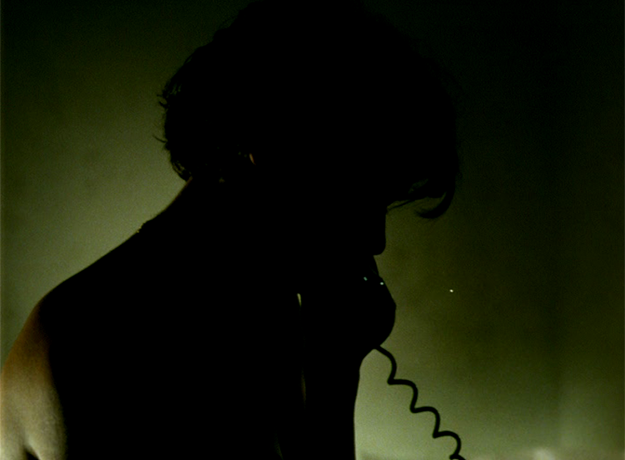
The Territory
How did you and Raúl Ruiz meet?
I believe it was in the beginning of the ’70s, when I was organizing the “Semaine des Cahiers du cinéma.” Serge Daney and Pascal Bonitzer introduced me to Ruiz. And only after that did I watch the films he had made for INA [the French National Audiovisual Institute]—The Suspended Vocation [1977] (in which Bonitzer starred) and The Hypothesis of the Stolen Painting [1978]. In 1978, I programmed those two films for Action-République, the cinema I ran in Paris at the time.
What about your relationship as producer-director?
It began in the early 80s (when I was starting to produce my first films) and, despite pauses, it lasted until Ruiz’s death, in 2011. Pierre Cottrell, who was a French producer, spoke to me about a project he and Raúl had: a horror film to be made in China, financed by Roger Corman. As the project wasn’t going that well (it was difficult to get permission to shoot in China and so on), Ruiz suggested to Pierre talking to me and eventually come to Portugal for the shoot (I was invested in doing co-productions with France, as being a producer in Portugal was in itself a fool’s idea). So, I undertook the production and The Territory [1981] turned out to be our first film together.
The production stories of Francisca by Manoel de Oliveira [1980], The Territory and The State of Things [1982] by Wim Wenders are connected: Ruiz allegedly inherited raw film stock from Oliveira’s feature and Wenders took some inspiration (and some people) from Ruiz’s film. How much of a myth is that?
Not that much of a myth… When shooting Francisca, Oliveira did mainly four-minute takes, using 120-meter reels, which run for about four minutes (we didn’t use the standard length reels, the 300-meter ones). If one of the actors flubbed the line, the reel would be lost (at least a part of it). We used the remaining part of those reels, the raw film, for shooting The Territory.
Ruiz would be obliged to shoot shorter takes then…
Well, The Territory takes happen not to be that long, but that was Raúl’s choice… [Laughs] We had some other film stock as well…
Sounds like a troubled production, though. Wenders’s The State of Things is said to be a sort of metanarrative about The Territory. How did it start?
Wenders came to visit Isabelle Weingarten, who was his girlfriend at the time and one of the actresses in Ruiz’s film. Wenders liked the cast and crew so much that he wanted to work with them. The State of Things plays with all the production issues Ruiz’s film faced: Roger Corman acts the role of a producer in The State of Things. Somehow it’s a reference to Ruiz’s film, to the fact I was furious at Corman, who was going to produce The Territory but never sent any money. I met him this summer at the Locarno Festival and we laughed at the whole story.
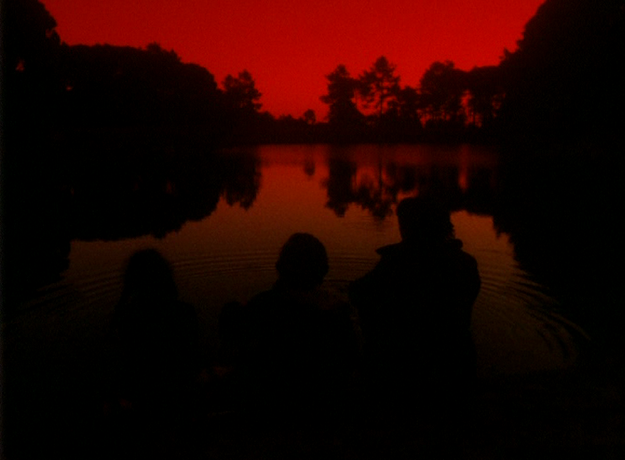
The Territory
Besides launching your working relationship, The Territory opened up an extraordinary series of films, including Three Crowns of the Sailor [1982], City of Pirates [1983], Manuel on the Island of Wonders [1985], The Treasure Island [1986]… All of them were produced by you during the ’80s. Can you tell us a bit about those projects?
After The Territory, INA expressed intention to support Ruiz’s films again and he presented Three Crowns of the Sailor to them. We shot the film in Portugal, working with The Territory’s crew and Ruiz brought some crew members from France (the cinematographer was Sacha Vierny, for example). During the shooting we thought up City of Pirates—Ruiz advanced some ideas but there was no such thing as a script. We came up with something new each day. Eventually, he had an idea of a structure, but no one ever read a script for City of Pirates. He envisaged this young character, a boy of about 10 years old, played by Melvil Poupaud (who then had his first role in cinema). His mother, Chantal Poupaud [French director and producer], was my press officer at the time—that’s how we found Melvil.
A bit of an unusual way of working…
In those days, films were imagined and created in a very particular manner, unplanned, driven by everyday circumstances. City of Pirates, for instance: at some point, Raúl asked me, “Why don’t we go to Baleal (a small Portuguese island where my family owns a house) and use it as our location?” Ruiz got very excited about the fact that the island became inaccessible during half of the day (the sandbar connecting it to the mainland is submerged at high tide). City of Pirates was mostly shot there, during 4 weeks.
In the end, Raúl told me he wouldn’t need the last two days we had scheduled. Instead, he would like to use them to do something else: a pastiche of City of Pirates, similar to what The State of Things was in relation to The Territory (Wenders’s film met real success with the public, a fact that hurt Raúl’s pride). So now he intended to imitate and mock his own film. My question was how were we going to do that, considering we didn’t have the means. He said he wouldn’t need much. We happened to have some outdated film stock (the sole reason for the “special effects” popping up in the first scenes) and the crew would magically become the cast. I’d be the leading actor [laughs], alongside Steve Baës, one of the writers (and actors) of Cheaters, a film by Barbet Schroeder I was working on… And that is how Vanishing Point [1984] came to light.
Ruiz amused himself creating a parody: Acácio de Almeida, the cinematographer, is a blind man; Vasco Pimentel, assistant sound, plays the deaf man. Even my children and my sisters (working in production design) show up in the film. The shoot lasted only for 2 or 3 days and we did a total of 270 takes, none of which was left out of the film, Raúl used them all! Two features in four weeks!
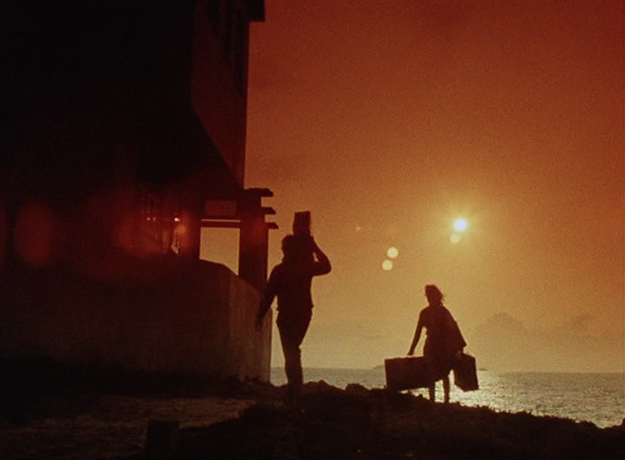
City of Pirates
You just had to offer Ruiz an island and some hostages…
True…
And you actually repeated the feat. The exceptional Manuel on the Island of Wonders was shot in Madeira Island. Was it also a Ruiz’s idea?
Not exactly. Castro Neves, a collaborator of mine, had an agreement with RTP [Portuguese Public Broadcasting Service] to produce a children’s television series. Willing to have Ruiz as the director, Castro Neves invited me to be one of the producers. Raúl accepted but in exchange, we would produce Valeria Sarmiento’s [Ruiz’s wife] first feature. We went to Madeira, and when Valeria’s film, Notre mariage [1984], was finished, a TV series was still to be produced. Penniless, we put to use whatever we would find. The cast included island inhabitants, the daughters of the French Ambassador in Portugal, etc…. If Ruiz asked for two bicycles, I might say, “Well, we don’t have them, but we do have an old Mercedes.” Manuel arose from that frenzy, that poetry Ruiz personified… and that lack of money. Going to the Casino was the only way I found to keep shooting and ultimately to take us all back to the continent… RTP was truly happy with the result and we released a slightly different cut (entitled Manuel’s Destinies) in French cinemas and at a parallel section of Cannes.
That ’80s run of films, full of pirates, ghosts, dreams and adventures, concludes with Treasure Island. Would you say that film is a golden key to the period?
Treasure Island was positively something unique. Ruiz had a long cherished dream of adapting Stevenson’s book and special circumstances ended up coming into play. At the time I was producing Oliveira’s The Satin Slipper [1985] and we had run out of funds. I went to Midef, a film market in Milan, where I met by chance Menahem Golan, from Cannon Films, and convinced him to finance Oliveira’s film. The Satin Slipper went to Cannes and won a prize in Venice. Golan and Yoram Globus, co-owner of Cannon, were so happy that I convinced them to finance Ruiz’s film.
On the whole, the Treasure Island production was troublesome. Golan and Globus sent two American actors (Martin Landau and Vic Tayback), while I and Raúl were casting French actors in Paris, not knowing exactly who would play each part. Jean-Pierre Léaud was the first to accept and afterward, Anna Karina did too. It’s funny to note how deeply people wanted to work with Raúl and how easily he welcomed them. Actors who were around, shooting some other film… Yves Afonso, Pedro Armendáriz Jr. (son of Pedro Armendáriz, a famous Mexican actor starring in a couple of films by John Ford), Jean-François Stévenin—they all joined us casually.
All the cast came to Portugal at the same time, but we had no script and no studio. We were based in a countryside village and we turned the local workers’ headquarter into our studio. In the end, the workers’ commission was able to build a swimming pool with the money we paid them. There was no such thing as a shooting schedule and as the second American actor was still missing (Tayback only joined us later) Raúl barricaded himself with Karina and Landau (whom he adored) and worked only with them, which is pretty obvious when you watch the film. The rest of the cast was just fooling around for about 2 weeks, but its idleness eventually turned to be profitable, gradually sketching an upcoming script: Léaud’s character lost some influence due to the actor’s mad behavior towards a crew member; Sheila, a very successful French pop singer who was friends with the first assistant director, joined us and played in two or three scenes.
To make it brief, when we finally showed the film to Golan and Globus, we were given a scolding. The film was already sold to a number of countries and, contrary to Cannon Films expectations, it had nothing to do with Stevenson’s book. Compared to that, The Satin Sleeper was as neat as Doctor Zhivago. The whole story was a mess: they didn’t pay for the film and in the end, it was Anatole Dauman, an important French producer connected with the Nouvelle Vague, who took the film. After six years, in 1991, Treasure Island was finally released, being included in Cannes’ Un Certain Regard section. Globus and Golan ended up paying some other director to make a “proper literary adaptation.”
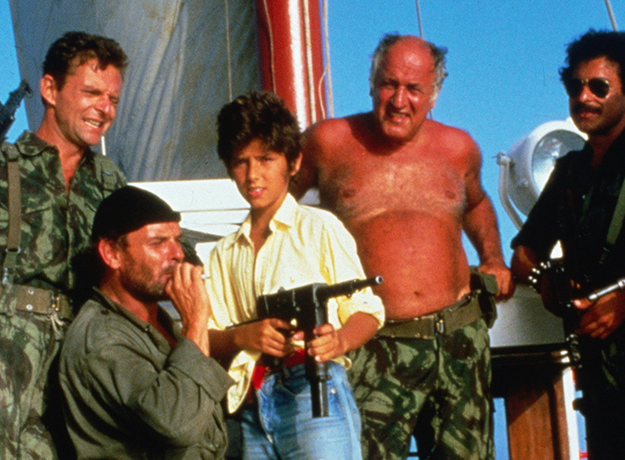
Treasure Island
It’s funny that after having his film refused for not being “official” enough, Ruiz was offered a position as director of one of the most important cultural institutions in France, La Maison de la Culture du Havre, in 1986. That appointment marks the beginning of a 10-year break in your joint productions…
Although I didn’t produce any of Raúl’s films for almost a decade, we always kept in touch. For instance, My Case [1986], a film by Oliveira, was entirely shot at La Maison, as Ruiz really wanted to have filmmakers working there. In between those years, Ruiz shot a film in Portugal I didn’t take part in: Dark at Noon [1992]. We were angry at each other for some time and to let me be the producer would be acknowledging that the film was mine as well—Raúl didn’t want that.
The next work you did together was also set in Portugal: Fado Major and Minor [1994]. How was it to return to your old working relationship after that break? Was it the beginning of a new phase?
Three Lives and Only One Death [1996] was a more crucial point in the reestablishment of our partnership than Fado Major and Minor, which was never even released outside of Portugal (we didn’t own the rights for its songs). In the mid-’90s Ruiz had already established himself as a director and we were both well known in France. I understood the intricacies of the European production system and that allowed us to develop more ambitious projects. Three Lives was the first film we made in an official, responsible manner. At the time, Oliveira, Raúl and I wanted to work with [Marcello] Mastroianni. Oliveira made Voyage to the Beginning of the World [1997] and Raúl made Three Lives. I believe that was Marcello’s last film—a symbolical considering the plot.
It was also our first to receive funding from French television and it cast a number of stars: Marcello, Chiara [Mastroianni] (who played opposite her father for the first time), Marisa Paredes, Melvil Poupaud…
Do you believe those circumstances gave Three Lives a different status or made it a more conventional film?
In a TV-funded film (and with such a cast) you naturally try to keep your feet to the ground, as you have to pay attention to a shooting schedule and a number of things. Eventually Ruiz tried to maintain a more traditional narrative structure… but that’s not necessarily a disadvantage. Three Lives is a most curious film; the same is true for Genealogies of a Crime [1997]. Genealogies is a very witty film, one of Raúl’s most accomplished works. And it did pretty well in terms of sales, it was his first public success: nearly 300,000 people watched it in France. The thing is, every time we did an orderly film, Ruiz would do a less orderly one right after. From time to time I had to offer him a project for him to do whatever he wanted. We worked with very small crews, not knowing exactly what we would do the next day—that was our deal.
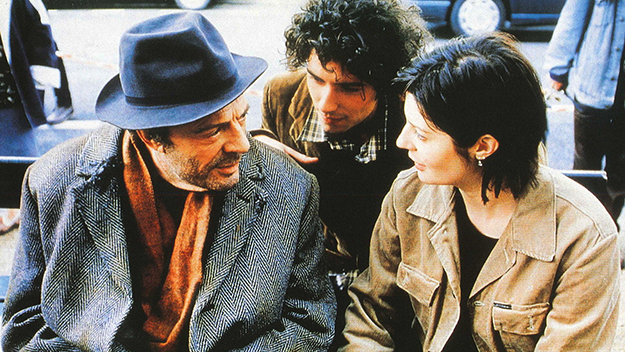
Three Lives and Only One Death
Love Torn in a Dream (2000) was included in one of those deals?
Absolutely. It was an exchange with Time Regained [1999], which was, in itself, a crazy adventure. After the huge success Genealogies had, we felt enough courage, enough strength to engage in something as risky as adapting [Marcel] Proust, a project Ruiz had for a long time. When the film was finished, he agreed to submit a shorter version of it to Cannes (165 minutes instead of 195 minutes) and the film was selected to be in competition. It was a tremendous success, even though the official institutions didn’t appreciate it much and it did pretty well in terms of box office: 100,000 people watched it in London and nearly 400,000 in France. None of my next films ever had such box-office results. Love Torn in a Dream was the payoff: Ruiz had 4 weeks in Quinta da Regaleira [Sintra] to shoot the film.
Were you usually involved in creative decisions with Ruiz, discussing edits and things of that kind?
It happened sometimes. We had a long discussion regarding That Day [2003]. Its first version was two hours long and I convinced him to cut a 2o-minute section that was sort of an autonomous short, redundant in relation to his other works, a mere exercise in style. He wasn’t happy with that decision but months later he admitted I was right. I remember telling him the film could make it to Cannes if he took out that section—and it did!
But those 2o minutes were lost…
Yes, I believe they were… Those things happen… For instance, Klimt [2005] had a new cut made by the German producers, which Ruiz didn’t authorize and that became the release version. I was able to retrieve the film’s original cut, a longer version, and make some copies. Afterwards the Germans destroyed the negative of the film.
Ruiz was in Chile when you sent him Camilo Castelo Branco’s novel Mysteries of Lisbon. Why did you offer that novel to a passionate reader who already had his own endless collection of stories
I am a big fan of Camilo’s work and I had wanted to adapt Mistérios de Lisboa for many years, or so I thought… The book I had read years ago was actually Memórias do Cárcere, written while Camilo was in prison. I mixed up the two books! Only much later, when reading Mistérios, did I realize my mistake. And then I became totally convinced someone had to turn it into a film—it was too good. As the book hadn’t been translated, a Portuguese screenwriter was needed. It took me almost 10 years to find out who would do it. And suddenly I was reminded of Carlos Saboga—an old Portuguese friend living in Paris, the person who convinced me to become the manager of Action-République at the end of the ’70s.
Carlos embraced the project but the director was still missing. He asked me, “Who could it be?” and the answer finally clicked: Ruiz! The book is a feuilleton and Ruiz was obsessed with feuilletons and soap operas… So I sent the book to Chile, where he was at the time, and he got very excited about it. Carlos and Ruiz didn’t know each other, so when Ruiz was back in Paris we went out for lunch—but that was their one and only meeting for quite a while. I had to fix a rule: they couldn’t see each other until Carlos had finished writing, otherwise I knew Ruiz would start giving Carlos ideas and instead of Mysteries we would have something like Fado Major and Minor or Love Torn in a Dream.
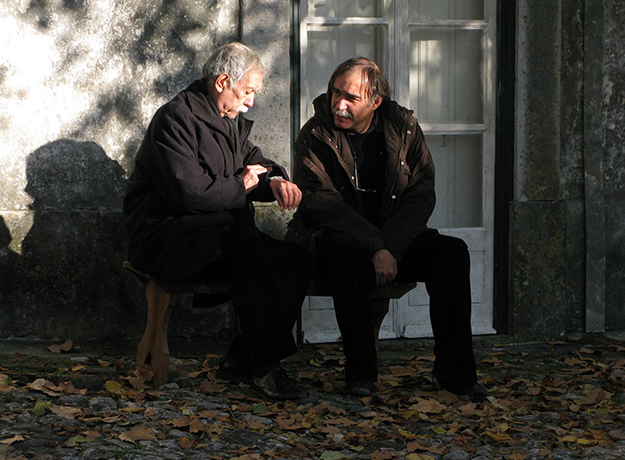
Raúl Ruiz and Paulo Branco
In what sense?
Ruiz’s scripts were chaotic. The first six pages of Time Regained are unreadable, you couldn’t understand a thing! Proust’s novel is peanuts compared to that. Luckily I was able to find us a proper screenwriter for Time Regained. After having a script, Ruiz was allowed to do whatever he wanted. And Time Regained is a very Ruizian film indeed! Take the hat scene as an example, or the objects moved by touch—none of that was written, Ruiz created it right then and there.
From all you have told me, “then and there” could be taken as your motto…
Indeed! [Laughs] For instance, we picked a new cinematographer for Mysteries two weeks before the shoot started. Our first choice failed and I came up with André Szankowski, who was very knowledgeable in digital, but had never made a feature before. And it worked! Ruiz was very unpredictable too. In the first place, we planned to shoot some of the film scenes in France and ended up shooting almost the entire film in a single place. People may not notice it but for the most part the film takes place in four or five décors, in the same Portuguese manor house. Ruiz did that a lot. When shooting Treasure Island, he decided to do a significant number of scenes in the garden of the hotel instead of going to the planned location. Had he directed Lines of Wellington [2012], it would have been in Jardim da Estrela [a Lisbon neighborhood park].
Mysteries was frequently referred to by you as Ruiz’s greatest work. Is it still your favorite?
It is a very special film, the most accomplished one, perhaps Ruiz’s masterpiece. For me, it is the dearest—being the last one we did, spoken in Portuguese… And yet he did so many incredible films. Time Regained, Manuel on the Island of Wonders… I have not seen City of Pirates for a long time, but I used to like it a lot. Also, I have never finished watching Fado Major and Minor—I don’t understand a bit of it! Treasure Island is fabulous, although I hated it for years—production issues were still tormenting me [Laughs].
According to Ruiz, there are three scenes in Mysteries that do not exist in Camilo’s novels nor in Saboga’s script. Do you know which ones he was talking about?
One of them is probably the scene of Pedro da Silva meeting his grandfather, the old and blind Marquês de Montezelos. Ruiz always wanted to give the characters a second chance. It is a fabulous scene—Saboga almost cried when he watched it, wishing it was his idea. The other must be the scene with the fishmonger’s wife, included in the TV version. It is part of what Ruiz called “the popular section”—the only part you could eventually take out without ruining the whole structure. What about the third scene? It is that of the painting that moves, showing a hunter, his dog and a girl. That one is related to ideas Ruiz had for subsequent scenes. He still shot some of those scenes, working with the actors when we were finished earlier. Or after everyone had left the set, using cardboard cutouts as if it were some strange ball. They weren’t included in the final cut, as we didn’t know exactly what he had in mind. I believe not even Ruiz did.
You often put Oliveira and Ruiz side by side, either because of their endless creativity or because of some sort of mutual disdain for scripts…
They were very different in that respect. Both of them were constantly inventing new stuff, but Ruiz was much more chaotic (only in Time Regained and Mysteries did he behave), while Oliveira was usually very faithful to the script. Naturally the mise en scène came after. Think about Abraham’s Valley [1993]—we had a script, but the way Oliveira films Leonor [Silveira] isn’t written there. It can’t be. And, well, Oliveira wrote insane scripts. Once we had a fight because he wanted to shoot a wildfire or something of the kind and I told him that was impossible. “Well,” he said, “it’s in the script, Paulo. You should have read the script more attentively, shouldn’t you?”
Raquel Morais is a former literature student and a freelance film critic based in Lisbon. She is currently a projectionist intern at the Portuguese Cinematheque.







